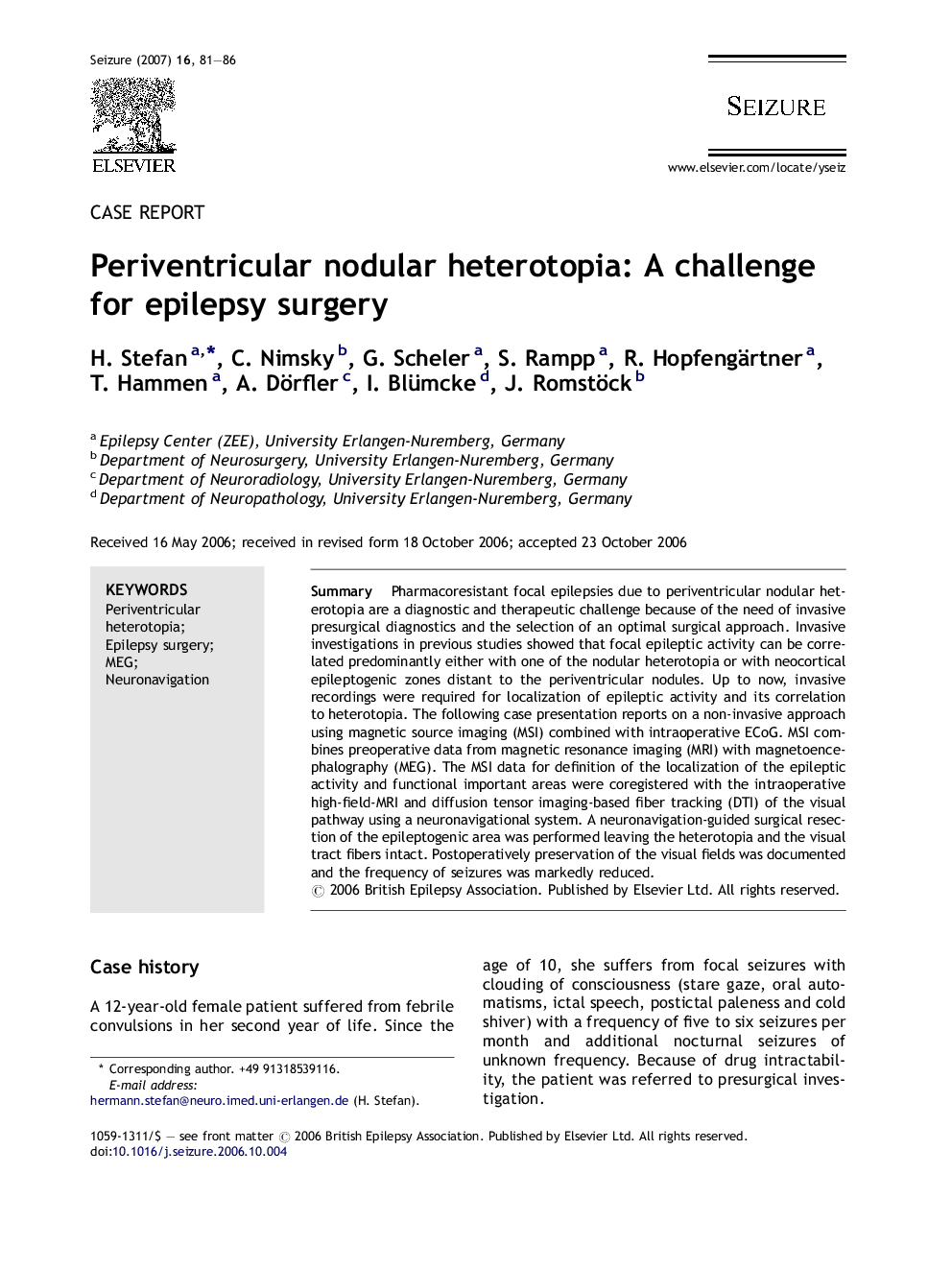| Article ID | Journal | Published Year | Pages | File Type |
|---|---|---|---|---|
| 342572 | Seizure | 2007 | 6 Pages |
SummaryPharmacoresistant focal epilepsies due to periventricular nodular heterotopia are a diagnostic and therapeutic challenge because of the need of invasive presurgical diagnostics and the selection of an optimal surgical approach. Invasive investigations in previous studies showed that focal epileptic activity can be correlated predominantly either with one of the nodular heterotopia or with neocortical epileptogenic zones distant to the periventricular nodules. Up to now, invasive recordings were required for localization of epileptic activity and its correlation to heterotopia. The following case presentation reports on a non-invasive approach using magnetic source imaging (MSI) combined with intraoperative ECoG. MSI combines preoperative data from magnetic resonance imaging (MRI) with magnetoencephalography (MEG). The MSI data for definition of the localization of the epileptic activity and functional important areas were coregistered with the intraoperative high-field-MRI and diffusion tensor imaging-based fiber tracking (DTI) of the visual pathway using a neuronavigational system. A neuronavigation-guided surgical resection of the epileptogenic area was performed leaving the heterotopia and the visual tract fibers intact. Postoperatively preservation of the visual fields was documented and the frequency of seizures was markedly reduced.
